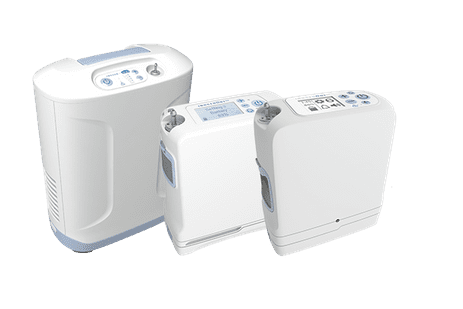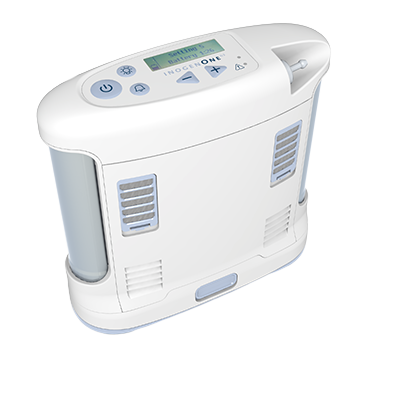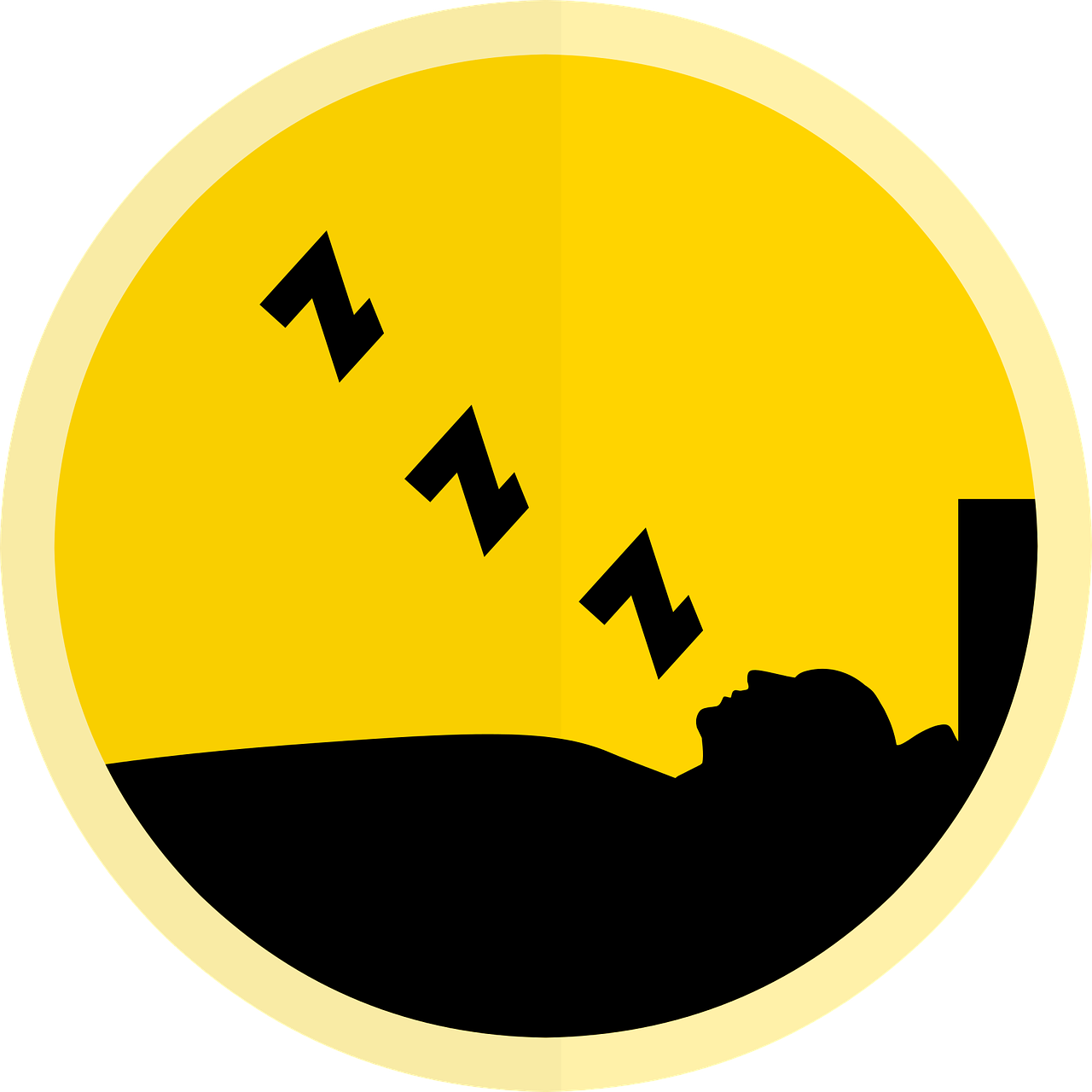.png)
Most people like to think of the internet as a place they can have all their burning questions answered. Just a quick visit to your favorite search engine and you can have some of the world’s most complex questions answered in a matter of minutes. However, while it is easy to use the internet, it’s still important to be wary about where we’re getting our information and how we use it.
When it comes to oxygen concentrators, there is a lot of misinformation to be found on the internet. Whether it’s confusion about the cost of oxygen concentrators, how they work, or anything else, this information might dissuade someone from purchasing one, and thus experiencing the many benefits that they offer. In many ways, this is understandable considering the fact that oxygen concentrators have a lot more features than other oxygen devices such as oxygen tanks and liquid oxygen tanks.
In this post, we’re going to go through a couple of the most common myths and misconceptions about oxygen concentrators and debunk them. By doing so, we hope to provide you with a more clear understanding of what your options are in terms of supplemental oxygen therapy. If you have any questions at all after reading this article, feel free to reach out to our respiratory specialists.
Myth #1 - They’re Not a Cost-Effective Option
Understandably, cost is a major concern for many oxygen patients. Money can be tight these days especially if you’re having to spend a lot on medication, doctor’s visits, and other healthcare costs. This is why many people are looking for the cheapest option when it comes to supplemental oxygen therapy.
While it’s certainly a good idea to look for the best deal possible on medical oxygen, it’s also important to think in the long term rather than the short term. Buying the cheapest oxygen concentrator might seem like a good idea at the moment, but you may begin to regret your purchase over the course of several weeks or months.

Oxygen concentrators can be deceiving in that they have a higher upfront cost than oxygen tanks or liquid oxygen tanks. But over the course of several years, oxygen tanks rack up a lot of costs that you simply won’t have to deal with if you own an oxygen concentrator. What’s more, oxygen concentrators that are manufactured by reputable brands tend to have a lifespan of anywhere between 5 to 7 years and they’re designed to be run 24 hours a day without being turned off.
Another reason oxygen concentrators are cost-effective is that they come with manufacturer’s warranties. A warranty is a contract that states the oxygen company will repair or replace a unit if it becomes damaged within a certain period of time. Most oxygen companies offer a 3-year warranty free of charge with the purchase of a new oxygen concentrator, but they can often be extended to a 5-year or lifetime warranties for an additional cost. However, for most people, three years is plenty of time to ensure that your oxygen device is working properly.

When you compare oxygen concentrators to other oxygen therapy devices like oxygen tanks and liquid oxygen tanks, the long-term costs are much lower. Oxygen tanks need to be refilled weekly and if you don’t want to drive to the nearest oxygen station, you will need to pay to have them delivered as well. Over time, this can become a hefty expenditure. On the other hand, oxygen concentrators do not need to be refilled and the only thing you’ll need to do is replace the sieve beds which are responsible for filtering out unneeded gases like nitrogen and argon.
Myth #2 - They’re Complicated and Difficult to Understand
The last thing most people want nowadays is another device or gadget to worry about. From smartphones to computers, it’s easy to feel overwhelmed by the complicated technology that surrounds us every day. This is why many people worry about purchasing an oxygen concentrator. They’re under the impression that it will be difficult to understand just like their phone or computer.

Fortunately, this is not the case! Oxygen concentrators are actually designed to be very easy to operate and many people would argue that they’re even easier to use than an oxygen tank or liquid oxygen tank. For example, one of the most popular portable oxygen concentrators on the market, the Caire FreeStyle Comfort, has just three buttons — one to turn the power on and off, and two to adjust the flow setting. The screen displays the flow setting you currently have selected as well as the amount of battery life you have remaining. Aside from learning how to replace and charge the battery, this is all you need to know in order to start using it.
{{cta('fa8abc2a-1e88-4fa3-82fd-1cb5b9ed43b2','justifycenter')}}
Another thing that makes oxygen concentrators easy to use is that they don’t have to be refilled like oxygen tanks do. Stationary oxygen concentrators like the Respironics EverFlo Q simply need to be plugged into a wall outlet in order to work and portable oxygen concentrators like the Inogen One G5 run off a portable battery. Oxygen tanks are much more difficult to learn because you need to know how to operate the tank as well as the oxygen concentrator that’s used to refill the tank. If you don’t want to hassle with this, you’ll need to have your oxygen delivered which is costly.

Several newer portable oxygen concentrators like the Inogen One G5 and Caire FreeStyle Comfort have technology that enables you to connect to your smartphone and view information pertaining to your oxygen usage. The good news, however, is that these features are entirely optional, so you can just use the basic features of the concentrator without ever connecting it to your phone.
Myth #3 - They’re Dangerous to Use
Safety should be your number one priority when you choose an oxygen machine. After all, the whole point of being on medical oxygen in the first place is to keep you healthy and happy. So there’s no point in adding any unnecessary risks if you don’t have to. Many oxygen patients are surprised to discover that oxygen concentrators are the safest option available to them.
Since oxygen concentrators take surrounding room air and filter out gases like nitrogen and argon, they don’t hold any compressed oxygen. The oxygen simply passes through the device and into the nasal cannula where it is inspired by the oxygen patient. Oxygen tanks and liquid oxygen tanks work differently because they actually hold oxygen within the unit. A normal oxygen tank holds oxygen gas while a liquid oxygen cylinder holds liquid oxygen. While liquid oxygen tanks hold oxygen at much lower pressures, they can still be dangerous to use.
![]()
Chances are when you go to pick up an oxygen tank for the first time, you will be provided with a long list of things that you’re not allowed to do. Here are just a few of the rules you’ll need to follow with an oxygen tank:
- Never smoke near an oxygen tank
- Oxygen tanks should be stored in a well-ventilated and non-confined space to avoid creating a fire hazard
- Use only water-based products rather than oily or petroleum-based products around an oxygen tank
- Never leave oxygen tanks or liquid oxygen tanks in a hot car
- Tanks should be stored so that they don’t move around while in transport
- Liquid oxygen tanks should never be stored on their side
- For more oxygen tank and liquid oxygen tank safety tips, check out this post
- For a list of oxygen concentrator safety tips, check out this post
As you can see, there are many things you need to watch out for when using any type of oxygen tank. And while there are certain things that you should look out for when you’re using an oxygen concentrator, they are nowhere near as dangerous as the alternative. For example, portable oxygen concentrators like the Inogen One G3 use pulse dose oxygen rather than continuous flow oxygen. The primary purpose of this is to conserve battery life, but it also serves a purpose as a safety feature. If you walk away from your oxygen device and leave it on by accident, the flow of oxygen will stop. This is because pulse dose concentrators have an advanced feature that only delivers oxygen when it detects a breath.

Another reason portable oxygen concentrators are so safe is that they are very small and lightweight. Most pulse dose portable oxygen concentrators are light enough to carry on one shoulder without it causing a lot of strain on your arm or back. Since you won’t be pulling it around using a wheeling cart, there’s no chance you’re going to bump into anything or get your nasal cannula caught on something as you’re walking.
Myth #4 - They’re Loud and Disruptive
One of the biggest benefits of oxygen tanks is that they’re virtually silent. As a result, many oxygen patients are afraid to upgrade to an oxygen concentrator because they fear it will be loud and disruptive to their daily activities. Fortunately, this is not the case! While oxygen concentrators do put out more noise than an oxygen tank, you’re unlikely to find anyone who believes they are “loud” or “disruptive.”
.jpg)
While some older oxygen concentrators — mainly home oxygen concentrators — ring in at around 45 to 50 dBA (decibels), newer pulse dose portable oxygen concentrators like the Inogen One G5 and Caire FreeStyle Comfort are under 40 dBA making them no louder than a whisper or quiet conversation. This is very impressive considering how powerful and reliable these devices are.
All-in-all, while oxygen concentrators do make noise, it’s nowhere near as bad as people expect it to be. You’ll still be able to go to church, a library, or a friend’s house without feeling like you’re a burden to anyone. And if you’re someone who needs to be on oxygen 24/7, your oxygen concentrator won’t cause you to lose any sleep.

Myth #5 - They Don’t Work at High Altitudes
If you’ve lived at sea level your whole life, you might never think about the effect altitude plays on not only your health but your ability to use a medical oxygen device as well. The higher you are in altitude the more you will notice your COPD symptoms starting to get worse. Since the air is thinner the higher you go, it’s harder for your body to get the oxygen it needs. What’s more, if you don’t travel to high altitude very often, there’s a chance you could contract altitude sickness. This is when your body has a difficult time adjusting to this new atmosphere. During this time, it’s more important than ever to have an oxygen device that you can rely on.
![]()
Contrary to popular belief, most oxygen concentrators work just fine at high altitudes. The maximum operational elevation of the SeQual Eclipse 5, for example, is 13,123 feet above sea level. Considering the highest city in the country is just 10,151 feet above sea level, you’ll have no problems using this oxygen concentrator. Other oxygen concentrators will have similar maximum operational altitudes, but it’s important to check with your oxygen supplier if you’re planning on traveling to the mountains. Keep in mind that this does not apply to flying. When you’re on a plane the cabin is oxygenated so your oxygen concentrator will have no problems functioning on a plane.
How to Avoid Misinformation About Oxygen Concentrators
While oxygen concentrators offer oxygen patients more options than ever before, this has come with a price. Because oxygen concentrators vary so widely in terms of the features they offer, it has led to confusion about what benefits they actually offer. Above are just a few of the most common misconceptions about oxygen concentrators, but you’re sure to come across more as you do more research. If you want to avoid this, be sure to consult the user manual of the oxygen concentrator you have a question about. Most oxygen manufacturers make their manuals available to the public, not just people who have bought from them. Alternatively, feel free to reach out to our respiratory specialists here at LPT Medical and we can answer any question you may have.
![]()
Conclusion
Most people with chronic obstructive pulmonary disease are prescribed long-term oxygen therapy (LTOT). This is a type of supplemental oxygen therapy that requires patients to be on oxygen for 15 hours a day or more, seven days a week. As a result, it’s important to find an oxygen device that meets your long-term goals, not just your short-term needs.
Since oxygen concentrators have not been around very long in comparison to oxygen tanks, there tends to be a lot of misunderstanding about what they are, how they work, and what benefits they provide. The above are just a few of the common myths we wanted to debunk in order to help you make an informed decision about your health.
{{cta('43b79c5e-6bd6-4f02-ac27-2d038d20c146','justifycenter')}}
If you don’t want to spend hours researching oxygen devices online, we recommend reaching out to our respiratory specialists here at LPT Medical. Our primary goal is to understand your needs and preferences, then narrow down an oxygen concentrator that’s best for you. We also aim to provide oxygen concentrators for anyone who wants them so we offer many flexible options such as oxygen concentrator rental, used oxygen concentrators, refurbished oxygen concentrators, and brand new oxygen concentrators depending on your budget.

